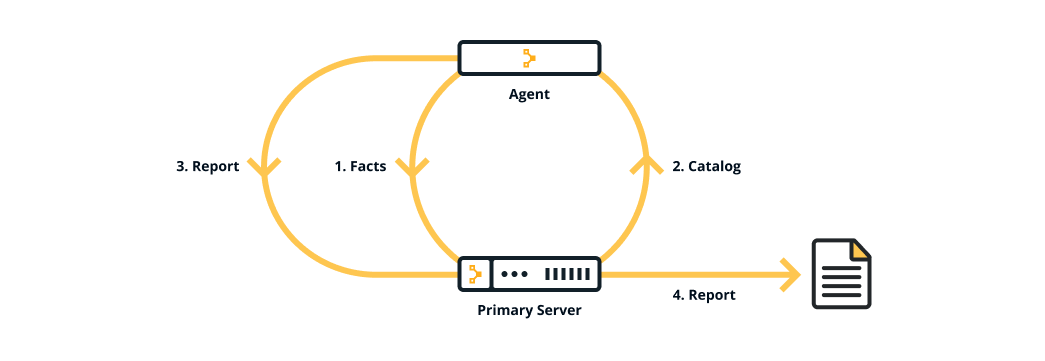What is Puppet?
Puppet is a tool that helps you manage and automate the configuration of servers.
When you use Puppet, you define the desired state of the systems in your infrastructure that you want to manage. You do this by writing infrastructure code in Puppet's Domain-Specific Language (DSL) — Puppet code — which you can use with a wide array of devices and operating systems. Puppet code is declarative, which means that you describe the desired state of your systems, not the steps needed to get there. Puppet then automates the process of getting these systems into that state and keeping them there. Puppet does this through Puppet primary server and a Puppet agent. The Puppet primary server is the server that stores the code that defines your desired state. The Puppet agent translates your code into commands and then executes it on the systems you specify, in what is called a Puppet run.
The following diagram shows how the server-agent architecture of a Puppet run works.

The primary server and the agent are part of the Puppet platform, which is described in The Puppet platform — along with facts, catalogs and reports.
